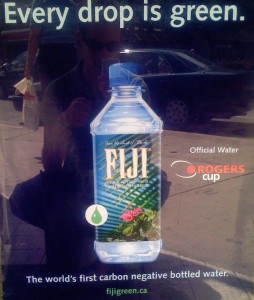Why We Lack Control Over Our Thoughts
My friend Jim Kellner performs “mental magic” to audiences around the country. Technically, he’s a stage hypnotist and a couple of weeks ago, he did a performance where he hypnotized a few people, including a friend of mine, Brian. Here’s just a little taste from the show. (Warning: you might not want to drink anything while watching. It could get messy!)
I talked to Brian a few days afterwards, and asked him how it was, and he said, “it was the weirdest thing, but I don’t remember anything about it!”. I just remember waking up and feeling really relaxed!
I confess, as a person that is less susceptible to hypnosis, I marvel that some people can get that deeply hypnotized. Furthermore, his shows really awaken my curiousity! What is going on in their brains that make them so highly suggestible?
According to an EEG study by Dr. Mark Jensen from the University of Washington, people under hypnosis have less fast brain wave activity, and more slow-wave activity. The fast wave activity is usually high when we are thinking, and slow-wave activity happens during relaxation, focus and sleep.
Also by putting patients in brain scans, they can see decrease in the activity of the prefrontal cortex. This is the area of the brain that gives meaning to what people are experiencing. This is also the area of the brain that also regulates planning complex behaviors, decision making and moderating social behavior.
How is this relevant to us if we aren’t getting hypnotized?
Believe it or not, if we are not aware, we go in and out of these suggestible states on a regular basis! And the media, advertising and politicians are especially adept at knowing how to influence our thoughts. Despite the fact that most people believe they are immune, the studies show otherwise!
For example, do you believe:
- That bottled water is safer or healthier for you?
- That fluoride is good for your teeth?
- That the US military spends most of its resources defending our nation?
If you do, your decision was made by effectiveness of advertising, and not by the facts.
Here are just 3 methods that the media, advertisers and politicians use to influence your thoughts. Knowing about them can help you more effectively question the information you are presented with:
1.) Affective conditioning
 A study conducted by the Institute of Medicine showed in a study in 1992 that deceptive water bottle labeling was a widespread practice.
A study conducted by the Institute of Medicine showed in a study in 1992 that deceptive water bottle labeling was a widespread practice.
For example, 1they often label bottled water as pure, pristine, natural or mountain water, even if its come from a pumped well and treated with chemicals. The images of nature on the label pair positive (yet deceptive) images with bottled water, thus inferring that they are superior to the water we get from our tap. The pairing of positive images with a product is used all the time in advertising.
Affective conditioning is so effective in persuasion that it is more effective than logical arguments!
A 2010 paper in the Journal of Consumer Research compared the choice people made between 2 different pens. One pen clearly had better properties than the other. Then half the subjects watched a screen that showed the inferior pen paired with positive imagery. The people that were not subject to affective conditioning chose the better pen. However, 70-80% of the people who were subject to the affective conditioning chose the inferior pen despite having been told the properties of both!
Affective conditioning is more powerful when you don’t realize it is happening! This is probably because our frontal lobes are not engaging in an active assessment of whether the information we are being presented with is believable!
Affective conditioning also influences our perceptions of others. For example:
- In movies and on TV, the hero or heroine is usually attractive and the villain is usually ugly: This programming makes us believe that good looking people have attractive qualities, and unattractive people are not as virtuous. Unfortunately the way we treat people influences their self-perception and thus they are more likely to conform to the stereotype.
- The news media often perpetuates racial stereotypes. 2If a suspect that has committed a horrific act is white, the news media often describes them with an air of disbelief, emphasizing their positive qualities. If the victim is black, the media often uses unsympathetic or dismissive tones.
2. Language:
I mentioned above that the bottled water industry calls its water pure, pristine, and natural even though the evidence indicates it is no cleaner or safer than tap water.
Language is often carefully crafted to created one image vs. another.
Here are some other examples:
- The Department of Defense, used to be called the Department of War. That subtle change of language means that at a more subconscious level, many Americans believe that our military own defends our interests. But America has been at war for 222 out of 239 years of our history since 1776, and America launched 201 out of 248 armed conflicts since the end of World War II. This subtle change in language makes it harder for us to see the reality of what our country is really doing.
- Have you noticed that bombs made and used by America are called innocent things like “Baby bombs”, B52s, TNT, or atomic bombs. But George Bush was able to start a war in Iraq with the false accusation that Saddam had “Weapons of Mass Destruction”. If the bombs were labeled anything similar to what the US uses, he would have had a much harder time convincing us to go to war.
- The term free trade speaks to the American desire for freedom. In reality, free trade means that protections by governments to protect their people and their environment will be overlooked in order to allow more trading opportunities. Despite the tremendous amount of data showing that free trade has meant a tremendous loss of jobs, and a decline in benefits and working conditions everywhere, most people have a hard time believing free trade could actually hurt us more than harm us.
- Repetition
Studies show that repetition is one of the most effective methods of persuasion. In fact, people more likely to believe statements true if they’ve heard them just 1 more time! Even if the person saying them is lying! And if we think that the statements might be true, we are more likely to be persuaded by it.
Why? Familiarity breeds liking.
Like associative conditioning, this method is especially effective if you the listener is not paying attention!
If its complicated, then its harder for people to think about, so they tend to believe it less. This is why short memorable phrases such as “trickle down economics”, “Yes we can!”, “Saddam has Weapons of Mass Destruction” and “It’s the economy stupid” can be so influential!
 This is also why it can be so hard to overturn concepts that were once believed to be true. Since the 1950’s the American Dental Association (ADA) has believed and told us that fluoride is good for our teeth. But evidence has been accumulating that shows that not only is not decisively protective, but that it is a neurotoxin! And despite the overwhelming evidence showing the harms of fluoride, the ADA is unwilling to take an objective look at the evidence!
This is also why it can be so hard to overturn concepts that were once believed to be true. Since the 1950’s the American Dental Association (ADA) has believed and told us that fluoride is good for our teeth. But evidence has been accumulating that shows that not only is not decisively protective, but that it is a neurotoxin! And despite the overwhelming evidence showing the harms of fluoride, the ADA is unwilling to take an objective look at the evidence!
So now that you understand at least some of the forces that affect how you think, how can you enhance your ability to see the truth? The more you know about the forces that affect your thinking, the easier it will be to understand when you are being manipulated. You can try to minimize your exposure to advertising, but it is virtually impossible to do if you live in today’s modern day world. A more effective solution is to know that big corporate advertising, the mainstream media, and many, but not all politicians are especially adept at the subtle method of persuasion. So it is especially important to find independent sources of information from reputable sources that do not stand to benefit from the information they disseminate. Use your frontal cortex! Always ask questions and examine the evidence.
Do you like this article? Please click the buttons below to share it with your friends!




Great article, thanks, Tina!
You are welcome Jean!